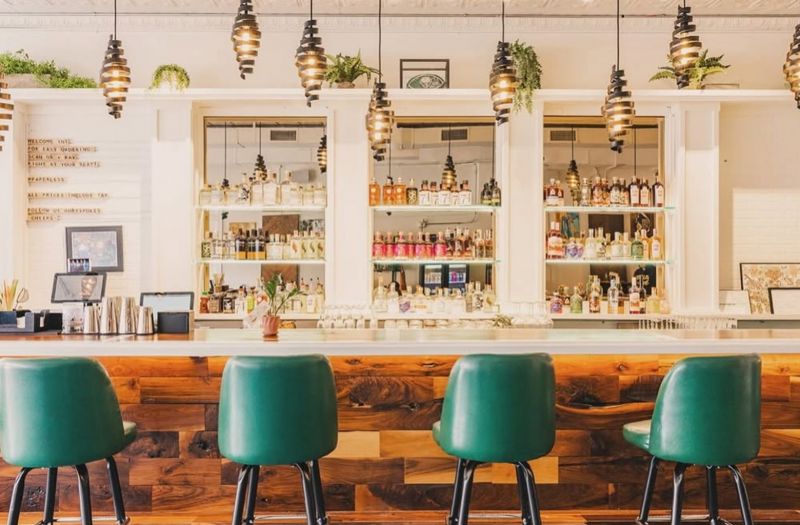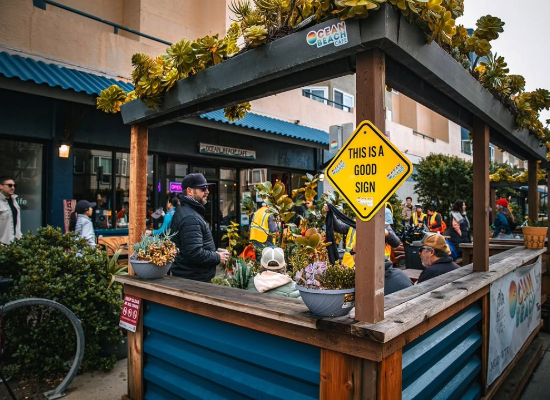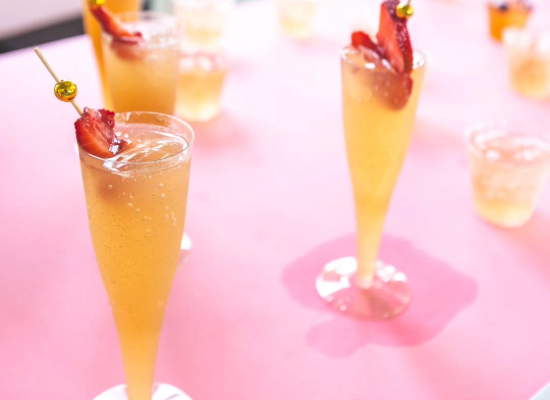Educating Bartenders Worldwide.
By Beverage Trade Network

The beverage industry is seeing a lasting shift as alcohol-free bars gain mainstream traction. Fueled by evolving consumer habits and health-conscious choices, the no-alcohol sector is driving category growth. IWSR's 2024 study predicts a +7% volume CAGR growth for no-alcohol through 2028, resulting in an additional $4 billion in value. The U.S. and Brazil are key markets, with 61 million new buyers since 2022. Bartenders Business explores whether the surge in sober socializing represents a fundamental shift in drinking culture or merely a fleeting trend.
Also read: The Sober Curious vs. Social Drinker: Is Alcohol Consumption Really Beneficial?
One of the biggest factors fueling the rise of alcohol-free bars is the changing drinking habits of younger generations. According to data research company Explorer Research, Gen Z, in particular, drinks 20% less alcohol than millennials did at their age. Their focus on wellness, mental clarity, and inclusivity has driven demand for sophisticated alternatives to traditional cocktails. The ‘sober curious’ movement, popularized through social media and wellness influencers, has also played a crucial role in encouraging consumers to rethink their relationship with alcohol.
Beyond Gen Z, nonalcoholic venues are attracting a diverse range of consumers. Business professionals are embracing these spaces for refined, alcohol-free options at networking events and business lunches. Health-conscious individuals appreciate the opportunity to enjoy a night out without compromising their well-being. Meanwhile, parents and designated drivers welcome the availability of sophisticated, alcohol-free beverages that go beyond the usual soda or water. As the demand for premium non-alcohol experiences grows, these venues are proving to be more than just a trend—they are becoming essential social spaces for a wide range of lifestyles and preferences.
These diverse consumer segments illustrate that alcohol-free bars are not just catering to those who abstain entirely from alcohol but also to a wider audience seeking balance in their social drinking habits.

Image: Ocean Beach Cafe, San Francisco’s first non-alcoholic bar
From a business perspective, alcohol-free bars offer significant revenue opportunities. According to the Restaurant Drive, beverages already drive approximately 80% of gross profit dollars in traditional bars due to lower input costs, reduced perishability, and minimal prep requirements. Nonalcoholic drinks can stretch these margins even further.
For instance, as Explorer Research notes, a well-crafted $9 mocktail can often yield higher profits than a traditional $14 cocktail, given the lower cost of ingredients and elimination of alcohol taxes. Some industry reports suggest that nonalcoholic beverages can achieve a profit margin of 65-75% when priced strategically.
Alcohol-free bars strategically attract customers who might not typically frequent traditional bars, thereby increasing foot traffic during off-peak hours. Venues embracing this model report notable benefits, including higher table spend per party due to premium prices. There will be nonalcoholic drinks and longer table times as guests savor creative, complex beverages. Additionally, offering alcohol-free options fosters stronger brand loyalty, with customers valuing the inclusivity. These venues are also seeing a rise in private event bookings, catering to corporate functions, wellness gatherings, and family-friendly celebrations, further solidifying their role in a changing social landscape.
Also read: 15 Advanced Mixology Techniques for Unforgettable Cocktails
The success of alcohol-free bars is not solely dependent on removing alcohol from the equation—it’s about reimagining beverages in a way that provides a premium experience. Many brands like Lyre’s, Seedlip, Pentire and more are leading the charge by investing in creating sophisticated alternatives that mimic the complexity of traditional spirits.
Bars that embrace these innovations and pair them with skilled mixology techniques are seeing tremendous success. Offering rotating seasonal mocktails, incorporating house-made syrups and ferments, and highlighting the craftsmanship behind each drink all contribute to elevating the experience for guests.

Image: Umbrella Dry Bar, known for its unique alcohol-free cocktails
Growing consumer demand, strong financial incentives, and continued innovation position alcohol-free bars for long-term success. The movement aligns with broader hospitality trends, including health and wellness, inclusivity, and experiential dining, making it well-positioned to evolve beyond a fleeting trend.
However, for alcohol-free bars to sustain their momentum, they must consistently deliver exceptional experiences. Maintaining high-quality ingredients and mixology standards is crucial to craft each drink with the same care as its alcoholic counterpart. It also requires continuously refreshing menus with creative, seasonal offerings that keep customers engaged and coming back for more. Just as importantly, fostering a lively and inviting atmosphere that encourages socialization is key to making these spaces more than just alternatives to traditional bars—they should be destinations in their own right, where people gather for connection, creativity, and a memorable night out.
The increasing investment in nonalcoholic beverage programs by both independent venues and major restaurant groups suggests that alcohol-free bars are more than a novelty—they are an integral part of the hospitality industry’s future.
[[relatedPurchasesItems-31]]
The rise of alcohol-free bars is a testament to the evolving landscape of social drinking. While skeptics may question whether this trend will endure, the financial viability, cultural relevance, and consumer enthusiasm suggest that alcohol-free bars are not only here to stay but are likely to reshape the industry as we know it.
For operators, the takeaway is clear: investing in alcohol-free options is not just a short-term strategy but a long-term opportunity to meet the changing demands of today’s consumers. Whether in dedicated alcohol-free spaces or as part of an expanded menu, the future of mindful drinking is bright—and profitable.
Header image sourced from Dry Spokes
Related Links
15 Low-ABV Spirits Every Bartender Needs for Modern Cocktails
Crafting the Perfect Cocktail: 15 Must-Have Modifiers for Bartenders